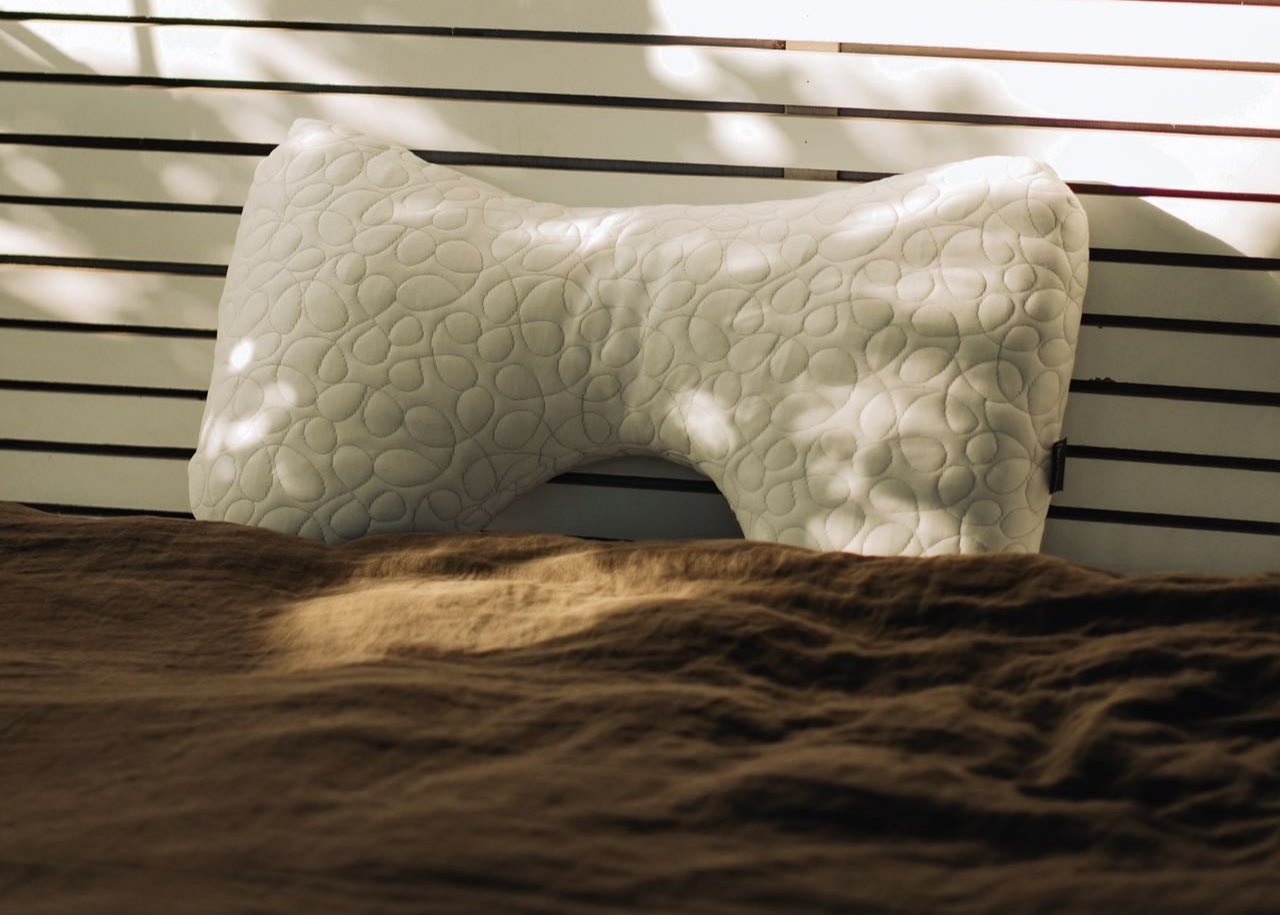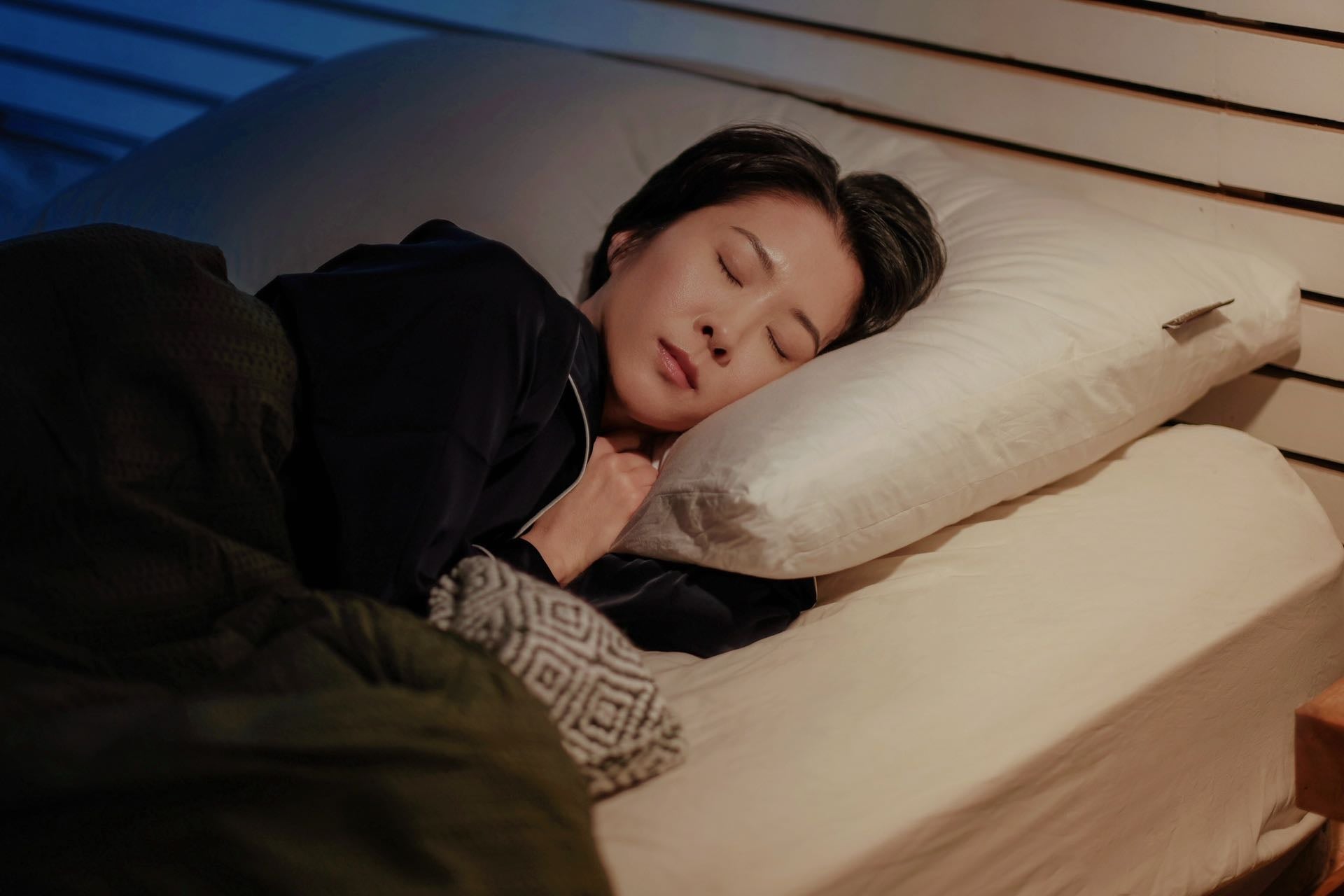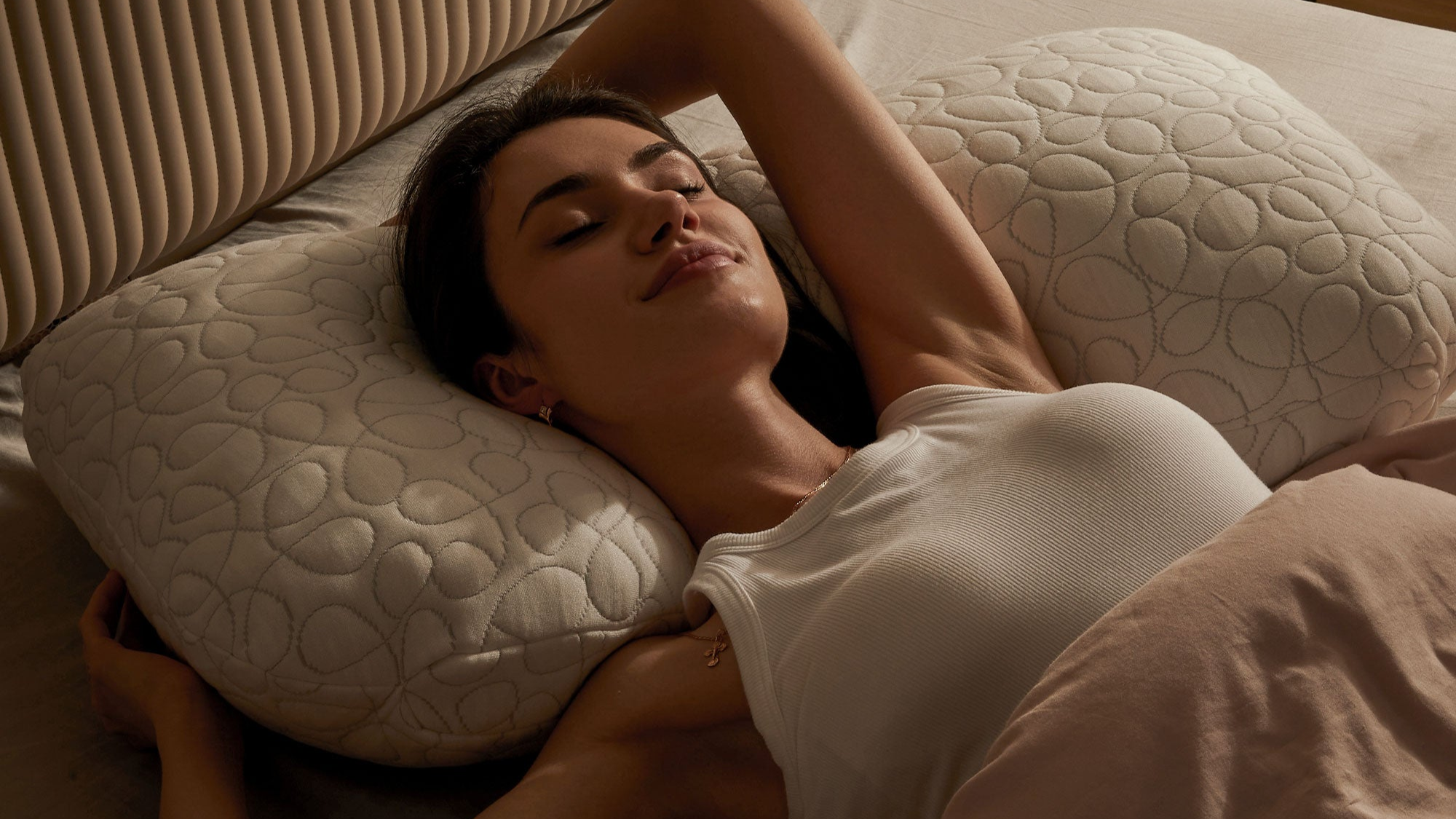Pillow with a “Scientific Design”? Understanding Ergonomic Cervical Pillows
In a world of high-tech gadgets and engineered everything, it might sound strange to talk about the science of pillow design. Yet, if you’ve ever suffered from neck pain or poor sleep, you know a pillow is not just a fluffy rectangle – it can be a carefully engineered tool for better health. Can a pillow really have a “scientific design”? Absolutely. In this article, we’ll demystify what an ergonomic cervical pillow is, why its design matters, and how it’s rooted in science and human anatomy. We’ll also provide some professional guidance on choosing one, and naturally, introduce how the DonaHona Cervical Pillow exemplifies these principles.
Poor Pillow, Poor Posture
Many people wake up with neck stiffness, headaches, or shoulder pain and don’t realize their pillow is a big culprit. A non-ergonomic (ordinary) pillow often forces you into a bad sleeping posture: maybe your head droops too low or is propped up too high. Imagine standing with your head tilted all day – your neck would protest! Yet sleeping 7–8 hours in a misaligned position does exactly that. Over time this can lead to chronic issues like tension headaches or even accelerate cervical spine degenerationthepaper.cn (yes, the wrong pillow can age your neck joints faster by putting extra stress on them).
The Wrong Logic Behind Common Pillows
Traditional pillows were often just bags of feathers or foam with no thought to neck support. The flawed logic was that as long as it’s soft, it’s fine. However, the human neck has a specific curvature – a gentle inward C-shape when viewed from the side (called the cervical lordosis). Lying down, this curve still needs support to maintain its shape. A flat pillow gives no support and lets the neck curve flatten; a too-thick pillow exaggerates the curve or pushes the neck forward. Both are problematic. Without proper support, the muscles and ligaments strain to hold your head in place, leading to sorenesshome.ifeng.com. If you’ve ever felt you need to pile your hand or an extra towel under your pillow, that’s a sign your pillow isn’t scientifically designed for neck support.
Common misconceptions persist: some believe a very hard pillow is needed for support (but that creates pressure points and discomfort), others think no pillow or a very low pillow is best to be “straight” (this can leave the neck dangling and lead to hyperextension issues)thepaper.cn. These approaches don’t work because they ignore basic anatomy – the need to maintain the natural alignment of the spine during sleep.
The Science of Ergonomic Pillows: Features and Principles
Ergonomic design means designing for efficiency and comfort based on how the human body actually works. A “scientifically designed” cervical pillow will have the following features grounded in anatomy and sleep science:
-
Contour Shape: Instead of a uniform height, it has a contoured shape with curves that mirror our neck and head. Typically, a lower central depression for the back of the head and a raised contour for the neck. This ensures when you lie on your back, the pillow supports the cervical curve rather than letting your head flop or chin tuckhealth.harvard.eduthepaper.cn.
-
Neutral Spine Alignment: The pillow keeps your head, neck, and spine aligned as if you were standing with perfect posture. For side sleepers, that means the pillow height roughly equals your shoulder breadth so your head isn’t angled up or downhealth.harvard.edu. For back sleepers, it means the pillow isn’t so thick that your chin is forced toward your chest. An ergonomic pillow often incorporates dual heights or adjustable filling to cater to different positions and body types, ensuring neutral alignment in all casessleepfoundation.org.
-
Support + Comfort Materials: Science also looks at material technology. Memory foam, for example, was developed from NASA technology to distribute pressure and adapt to shape. Studies have shown memory foam and latex pillows tend to improve neck support and reduce morning pain compared to traditional pillowshealthline.comwebmd.com. A well-designed cervical pillow uses high-density, slow-rebound memory foam that both conforms to the neck and supports it by not collapsing over timedonahona.com. It’s a fine balance: too soft and it’s unsupportive, too hard and it’s uncomfortable. Engineers test for the right foam firmness that will allow a pleasant “sink” for the skull and a firm lift for the neck.
-
Ergonomic Extras: Some modern pillows add features like breathable channels or cut-outs. For example, an ergonomic pillow might have cut-outs or indentations for shoulder space (so side sleepers don’t jam the pillow against their shoulder) or for places to rest your arms (to avoid numbness). Ventilation holes or cooling gel layers are sometimes added to address heat retention of foam – making sure the pillow stays cool also improves sleep quality. While these might sound like marketing, there’s real science in temperature and comfort affecting sleep cycles.
The Cervical Pillow by DonaHona – Applied Ergonomics in Action
Let’s illustrate with the DonaHona Cervical Pillow, which was explicitly created with ergonomic principles:
-
It has a dual-height contoured shapedonahona.com. The middle is gently curved for your head, and the sides are raised to support your neck (one side slightly higher than the other). This means whether you sleep on your back or side, you get customized height for alignment. No more neck craning or gaps.
-
There are built-in armrest groovesdonahona.com. This is a clever ergonomic addition – if you tend to slide your arm under the pillow or you’re a side sleeper, these subtle hollows reduce pressure on your arms and shoulders, preventing that “pins and needles” feeling. It encourages a natural shoulder position so your upper body isn’t strained.
-
Material-wise, it uses CertiPUR-US certified high-density memory foamdonahona.com. In plain terms, that means the foam has been tested for safety (no harmful chemicals) and is of high quality. High-density foam ensures the pillow doesn’t quickly lose shape or support (a crucial aspect of scientific design: durability and consistency). It’s slow-rebound, so it adapts each night to your head/neck but springs back to shape during the day. This “dynamic support” helps maintain consistent ergonomic support even if you move during sleep.
-
The cover is breathable and washabledonahona.comdonahona.com – an often overlooked but important design element. A scientific approach means considering hygiene and thermal regulation too. The pillow’s cover is a soft bamboo-blend fabric that wicks moisture and allows airflow, keeping you cool. A cooler environment helps you stay in deep sleep longer (sleep science 101: a cool head promotes better sleep). Being removable and washable means you can keep the pillow clean and allergen-free, important for long-term health.
All these features are not just bells and whistles; they’re grounded in solving real sleep problems. Ergonomic testing likely went into this pillow – for instance, ensuring the neck contour isn’t too high or low by testing on many individuals, tweaking foam firmness for optimal pressure relief, etc. The result is a pillow that embodies “scientific design” by addressing human biomechanics.
From Science to Better Sleep – Why It Matters
It’s great to talk about features, but the proof is in how you feel. What can you expect if you switch to an ergonomically designed cervical pillow? According to both research and user reports:
-
Reduced Neck Pain: By keeping the neck neutral, you relieve the strain on muscles and joints. People often report significant reduction in morning neck stiffness after a few nightsdonahona.com.
-
Better Spinal Health: Long term, you help protect your cervical spine from unnatural wear. A proper pillow can even slow down degenerative changes by reducing chronic stress on the vertebrae (think of it as preventive care, similar to wearing good shoes to prevent knee/back issues).
-
Improved Sleep Quality: Comfort leads to less tossing and turning. One study review noted that a pillow allowing proper cervical alignment can improve sleep quality and reduce awakeningsasonor.com. If you snore or have mild sleep apnea, the right pillow height can keep airways more open (for example, keeping the chin from tucking to the chest improves airflow)asonor.com. In ergonomic terms, that’s reducing obstruction by posture.
Conclusion & Action Steps
In short, pillows do benefit from scientific, ergonomic design. If you’re using an old flat pillow or one bought without much thought, consider upgrading to a pillow engineered for neck support. Here are steps to take:
-
Evaluate Your Current Pillow: Do you wake with pain or numbness? Does your pillow look misshapen or require constant adjusting? These are red flags.
-
Research Ergonomic Options: Look for pillows labeled “cervical” or “ergonomic”. Read what design features they offer. Compare those to the principles above (contour shape, proper height, supportive materials, etc.).
-
Try the DonaHona Cervical Pillow: It’s a prime example of scientific design meeting comfort, and it comes with a 100-night trial (as per the company’s policy). This means you can literally test the ergonomic difference in your own bed, risk-free.
-
Don’t Forget Pillow Position: Even the best pillow works only if used correctly. Make sure to position the pillow so the contour aligns with your neck (many have a thicker edge – that edge goes under your neck for back sleeping, for instance). Manufacturers often provide diagrams – follow them to get the full benefit.
-
Replace When Needed: A science-designed pillow will last longer than a cheap one, but it’s not forever. High-quality memory foam pillows last about 3–5 years before they might start to lose resiliencysleep.com. If your ergonomic pillow gets too soft or uneven, it’s time for a new one to keep that scientific support in action.
By understanding the “why” behind pillow design, you’re empowered to make a better choice for your sleep and health. The field of ergonomics and sleep science has evolved – we no longer have to accept neck pain as a price of sleeping. A well-designed cervical pillow is a small investment with potentially life-changing benefits: waking up refreshed, pain-free, and ready to take on the day with your head held high (literally, in perfect alignment!). Sleep smart, and your body will thank you.










Leave a comment
This site is protected by hCaptcha and the hCaptcha Privacy Policy and Terms of Service apply.